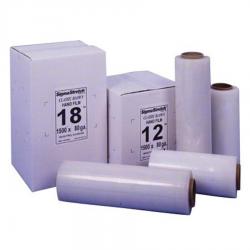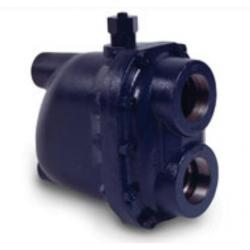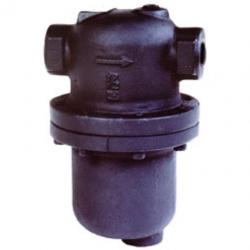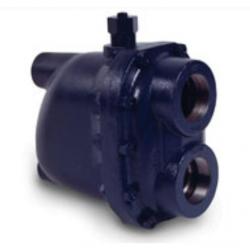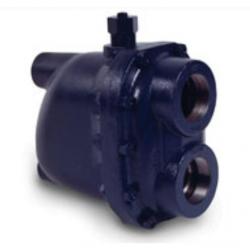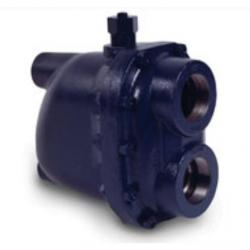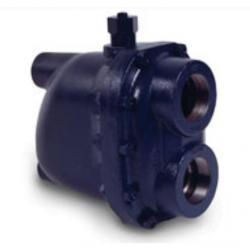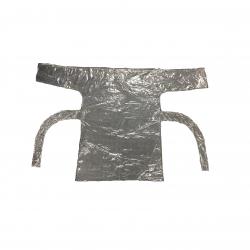17 Quart
2-1/2in
View:
Active Filters :
- Size: 2-1/2in 17 Quart 18in x 1000ft One Size Fits Most
- Material: Ductile Iron Durlon 9000 Plastic Poly/Plastic
Part #:510203
- 18" x 120 Gauge x 1000'Cast Hand Stretch Film Cast Stretch Film releases from the roll smoothly reducing warehouse noise up to 75%.
Film stretches up to 250%.
Ultra clear film makes bar codes and other important information easy to read.
Great for use on uniform loads.
120 Gauge for loads up to 4,000 lbs.
Part #:501644
- Double Utility Pail, 17qt, Gray
RCP2617GRA
Be the first to write a review
Double pail allows you to separate cleaning solution from your rinse water.
Molded-in graduations.
Wide pour spout.
Durable, molded plastic.
$
50.83
Qty:
Part #:501-C6127
- Automatic Differential Condensate Controllers
Armstrong automatic differential condensate controllers (DC) are designed to function on applications where condensate must be lifted from a drain point or in gravity drainage applications where increased velocity will aid in condensate drainage.
Lifting condensate from the drain pointoften referred to as siphon drainagereduces the pressure of the condensate, causing a portion of it to flash into steam. Since ordinary steam traps are unable to distinguish flash steam from live steam, they close and impeded drainage.
Increased velocity with gravity drainage will aid in drawing the condensate and air to the DC. An internal steam bypass controlled by a manual metering valve causes this increased velocity. Therefore, the condensate controller automatically vents the bypass or secondary steam. This steam is then collected for use in other heat exchangers or discharged to the condensate return line.
Capacity considerations for draining equipment vary greatly, according to the application. However, a single condensate controller provides sufficient capacity for most applications..
How they work
Condensate, air and steam (live and flash) enter through the controller inlet. At this point, flash steam and air are automatically separated from the condensate. Then they divert into the integral bypass at a controlled rate, forming secondary steam.
The valve is adjustable so it matches the amount of flash present under full capacity operation or to meet the velocity requirements of the system. The condensate discharges through a separate orifice by the inverted bucket.
Because of the dual-orifice design, there is a preset controlled pressure differential for the secondary steam system, while maximum pressure differential is available to discharge the condensate.
Qty:
Part #:501-D25975
- DS Series In-Line Condensate SeparatorsDuctile Iron Drain SeparatorCondensate in steam and air piping reduces thermal efficiency, causes water hammer, corrodes equipment such as valves and pipes, and causes other problems.
In-line (drain) separators DS-1, DS-2, DS-3, and DS-4 separate condensate efficiently by using the centrifugal force of steam or air created by introducing it into a specifically shaped path. Because of the simple structure of the drain separators, pressure loss is minimized, enabling clean, dry steam or air to be fed to equipment.
When steam or air flow enters the drain separator, centrifugal force is generated in the fluid because of the devices internal structural design. The fluid drains along the wall because of the difference in specific gravity with steam or air, eventually striking the baffle. The baffle guides the fluid to the drain outlet and to the trap, which drains it. As a result, small dirt particles and condensate are separated and removed from the system through the bottom drain.
• Cyclone structure maximizes liquid separation efficiency
• Pressure loss is extremely low
• No moving parts means no breakdowns
Qty:
Part #:501-D25976
- DS Series In-Line Condensate SeparatorsDuctile Iron Drain SeparatorCondensate in steam and air piping reduces thermal efficiency, causes water hammer, corrodes equipment such as valves and pipes, and causes other problems.
In-line (drain) separators DS-1, DS-2, DS-3, and DS-4 separate condensate efficiently by using the centrifugal force of steam or air created by introducing it into a specifically shaped path. Because of the simple structure of the drain separators, pressure loss is minimized, enabling clean, dry steam or air to be fed to equipment.
When steam or air flow enters the drain separator, centrifugal force is generated in the fluid because of the devices internal structural design. The fluid drains along the wall because of the difference in specific gravity with steam or air, eventually striking the baffle. The baffle guides the fluid to the drain outlet and to the trap, which drains it. As a result, small dirt particles and condensate are separated and removed from the system through the bottom drain.
• Cyclone structure maximizes liquid separation efficiency
• Pressure loss is extremely low
• No moving parts means no breakdowns
Qty:
Part #:501-D500693
- Automatic Differential Condensate Controllers
Armstrong automatic differential condensate controllers (DC) are designed to function on applications where condensate must be lifted from a drain point or in gravity drainage applications where increased velocity will aid in condensate drainage.
Lifting condensate from the drain pointoften referred to as siphon drainagereduces the pressure of the condensate, causing a portion of it to flash into steam. Since ordinary steam traps are unable to distinguish flash steam from live steam, they close and impeded drainage.
Increased velocity with gravity drainage will aid in drawing the condensate and air to the DC. An internal steam bypass controlled by a manual metering valve causes this increased velocity. Therefore, the condensate controller automatically vents the bypass or secondary steam. This steam is then collected for use in other heat exchangers or discharged to the condensate return line.
Capacity considerations for draining equipment vary greatly, according to the application. However, a single condensate controller provides sufficient capacity for most applications..
How they work
Condensate, air and steam (live and flash) enter through the controller inlet. At this point, flash steam and air are automatically separated from the condensate. Then they divert into the integral bypass at a controlled rate, forming secondary steam.
The valve is adjustable so it matches the amount of flash present under full capacity operation or to meet the velocity requirements of the system. The condensate discharges through a separate orifice by the inverted bucket.
Because of the dual-orifice design, there is a preset controlled pressure differential for the secondary steam system, while maximum pressure differential is available to discharge the condensate.
Qty:
Part #:501-D580960
- Automatic Differential Condensate Controllers
Armstrong automatic differential condensate controllers (DC) are designed to function on applications where condensate must be lifted from a drain point or in gravity drainage applications where increased velocity will aid in condensate drainage.
Lifting condensate from the drain pointoften referred to as siphon drainagereduces the pressure of the condensate, causing a portion of it to flash into steam. Since ordinary steam traps are unable to distinguish flash steam from live steam, they close and impeded drainage.
Increased velocity with gravity drainage will aid in drawing the condensate and air to the DC. An internal steam bypass controlled by a manual metering valve causes this increased velocity. Therefore, the condensate controller automatically vents the bypass or secondary steam. This steam is then collected for use in other heat exchangers or discharged to the condensate return line.
Capacity considerations for draining equipment vary greatly, according to the application. However, a single condensate controller provides sufficient capacity for most applications..
How they work
Condensate, air and steam (live and flash) enter through the controller inlet. At this point, flash steam and air are automatically separated from the condensate. Then they divert into the integral bypass at a controlled rate, forming secondary steam.
The valve is adjustable so it matches the amount of flash present under full capacity operation or to meet the velocity requirements of the system. The condensate discharges through a separate orifice by the inverted bucket.
Because of the dual-orifice design, there is a preset controlled pressure differential for the secondary steam system, while maximum pressure differential is available to discharge the condensate.
Qty:
Part #:501-D582994
- Automatic Differential Condensate Controllers
Armstrong automatic differential condensate controllers (DC) are designed to function on applications where condensate must be lifted from a drain point or in gravity drainage applications where increased velocity will aid in condensate drainage.
Lifting condensate from the drain pointoften referred to as siphon drainagereduces the pressure of the condensate, causing a portion of it to flash into steam. Since ordinary steam traps are unable to distinguish flash steam from live steam, they close and impeded drainage.
Increased velocity with gravity drainage will aid in drawing the condensate and air to the DC. An internal steam bypass controlled by a manual metering valve causes this increased velocity. Therefore, the condensate controller automatically vents the bypass or secondary steam. This steam is then collected for use in other heat exchangers or discharged to the condensate return line.
Capacity considerations for draining equipment vary greatly, according to the application. However, a single condensate controller provides sufficient capacity for most applications..
How they work
Condensate, air and steam (live and flash) enter through the controller inlet. At this point, flash steam and air are automatically separated from the condensate. Then they divert into the integral bypass at a controlled rate, forming secondary steam.
The valve is adjustable so it matches the amount of flash present under full capacity operation or to meet the velocity requirements of the system. The condensate discharges through a separate orifice by the inverted bucket.
Because of the dual-orifice design, there is a preset controlled pressure differential for the secondary steam system, while maximum pressure differential is available to discharge the condensate.
Qty:
Part #:501-D583538
- Automatic Differential Condensate Controllers
Armstrong automatic differential condensate controllers (DC) are designed to function on applications where condensate must be lifted from a drain point or in gravity drainage applications where increased velocity will aid in condensate drainage.
Lifting condensate from the drain pointoften referred to as siphon drainagereduces the pressure of the condensate, causing a portion of it to flash into steam. Since ordinary steam traps are unable to distinguish flash steam from live steam, they close and impeded drainage.
Increased velocity with gravity drainage will aid in drawing the condensate and air to the DC. An internal steam bypass controlled by a manual metering valve causes this increased velocity. Therefore, the condensate controller automatically vents the bypass or secondary steam. This steam is then collected for use in other heat exchangers or discharged to the condensate return line.
Capacity considerations for draining equipment vary greatly, according to the application. However, a single condensate controller provides sufficient capacity for most applications..
How they work
Condensate, air and steam (live and flash) enter through the controller inlet. At this point, flash steam and air are automatically separated from the condensate. Then they divert into the integral bypass at a controlled rate, forming secondary steam.
The valve is adjustable so it matches the amount of flash present under full capacity operation or to meet the velocity requirements of the system. The condensate discharges through a separate orifice by the inverted bucket.
Because of the dual-orifice design, there is a preset controlled pressure differential for the secondary steam system, while maximum pressure differential is available to discharge the condensate.
Qty:
Part #:501-D598205
- Automatic Differential Condensate Controllers
Armstrong automatic differential condensate controllers (DC) are designed to function on applications where condensate must be lifted from a drain point or in gravity drainage applications where increased velocity will aid in condensate drainage.
Lifting condensate from the drain pointoften referred to as siphon drainagereduces the pressure of the condensate, causing a portion of it to flash into steam. Since ordinary steam traps are unable to distinguish flash steam from live steam, they close and impeded drainage.
Increased velocity with gravity drainage will aid in drawing the condensate and air to the DC. An internal steam bypass controlled by a manual metering valve causes this increased velocity. Therefore, the condensate controller automatically vents the bypass or secondary steam. This steam is then collected for use in other heat exchangers or discharged to the condensate return line.
Capacity considerations for draining equipment vary greatly, according to the application. However, a single condensate controller provides sufficient capacity for most applications..
How they work
Condensate, air and steam (live and flash) enter through the controller inlet. At this point, flash steam and air are automatically separated from the condensate. Then they divert into the integral bypass at a controlled rate, forming secondary steam.
The valve is adjustable so it matches the amount of flash present under full capacity operation or to meet the velocity requirements of the system. The condensate discharges through a separate orifice by the inverted bucket.
Because of the dual-orifice design, there is a preset controlled pressure differential for the secondary steam system, while maximum pressure differential is available to discharge the condensate.
Qty:
Part #:4012-PLASTIC GOWN
- Made Locally in Ashtabula, OH!
Cerberus Safety Products protective gowns are designed to be disposable and convenient. Each gown is one-size-fits-all for adults, made from 0.0015in thick polyethylene film. Plastic welded, these gowns fit over the head and tie around the user, either in front or back depending on the individual's needs.
FD universal protective gown, suitable for standard and contact precautions, food service, and nursing applications.
Waist ties for a more secure fit
Packaged in rolls seperated by perforation for bulk quantity
Thumb holes for added mobility
Intended to protect from the minimal risk transfer of microorganisms and fluid
Qty:
Displaying: 1 - 11 of 11 Matching Items


